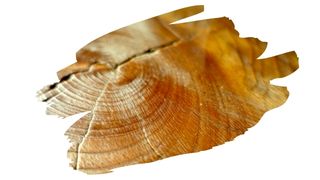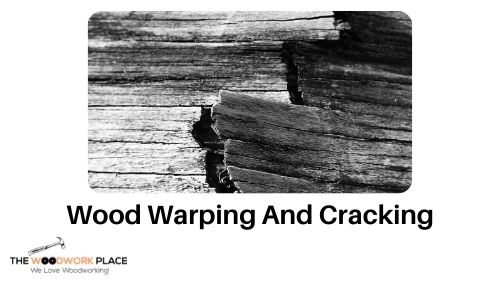It should be simple enough.
Cedar is a straightforward wood to work with. It’s durable too, so anything you make with it will last generations.
Cedar is even naturally rot-resistant, making it a popular material for outdoor structures and garden furniture. So, choosing an oil finish for this lumber should be easy enough… right?
Take Teak oil, for example. This penetrating oil finish has been used on Teak wood decking and furniture to great effect. But, can it work equally as well on exterior Cedar?
Well, in this post, you will discover what makes Cedar one of the most durable woods on the market. And we reveal why this timber still needs a sealer all the same.
You will also learn when to use Teak oil on Cedar wood…and when to keep this oil well away from it. And we reveal the best waterproofing sealer for outdoor Cedar furniture.

This post may contain affiliate links to products that we receive a commission for (at no additional cost to you). Learn more here.
Should You Seal Cedar Wood?
Cedar is one of the most durable materials you can get your hands on, whether you’re using it for interior or exterior wooden structures. And here’s why…
Cedar Is Stable…
One of the main reasons why we seal wood is to prevent water and moisture from soaking into it.
If wood absorbs too much water, it will expand. And as it dries out, it contracts.
This expanding/contracting movement can cause wood to warp and twist. And once wood warps, it can completely throw off the dimensions of a structure.

However, Cedar is stable because it hardly shifts around. Even if it gets drenched, Cedar won’t end up getting bent out of shape.
Related Post: What To Do When Solid Wood Cabinet Doors Start Warping (Solved!)
Cedar Is Rot-Resistant…
Western Red Cedar is famously rot-resistant. And for this reason, it is popularly used as siding material.
Related Post: Beginners Guide To Caulking Cedar Siding (+ 5 Quick Tips!)
In fact, if left untreated, Cedar heartwood will resist wood rot and decay. However, while Cedar wood can fight off fungi attacks, it isn’t able to ward off the effects of weathering.
…But Cedar Is Not Weatherproof
As Cedar gets repeatedly drenched with (rain)water, it absorbs that water, and then dries out. And overtime, as a result of that constant drenching, Cedar can begin to crack and peel.
What’s more, Cedar wood’s color can become bleached out due to ultraviolet oxidation. In simpler terms, this means that without UV protection, exterior Cedar can turn an ash-gray color.
So, untreated Cedar wood can survive without an oil finish or sealer. However, Cedar lasts longer when coated with a protective finish.
And, What Is The Best Oil For Interior Cedar Wood?
For interior Cedar wood, a coat of boiled Linseed oil will work wonderfully with this aromatic lumber.
Boiled Linseed oil will enhance the look of this softwood, and keep its grain nourished.
Boiled Linseed oil (BLO) is a superheated (and chemically treated) version of raw Linseed oil. And BLO will dry in a fraction of the time of its raw counterpart.
This is all thanks to the fact that BLO metallic drying agents have been added to help speed up the drying process.
But, BLO is not a waterproofing sealer, it is not permanent, and you will need to reapply it at least once a year. So, this finish isn’t the best option for outdoor Cedar.
Still, it’s worth pointing out that if you do use BLO on exterior Cedar wood, it will protect it from the drying-out effects of weathering.
However, BLO won’t safeguard Cedar from bleaching out. This is because boiled Linseed oil finishes do not contain UV-inhibitors.
Related Post: Boiled Linseed Oil vs Thompson’s Water Seal: Which One Is Better For Wood?
What’s The Difference Between Teak Oil And Linseed Oil?
Boiled Linseed oil is made from naturally extracted raw Linseed oil. And raw Linseed oil is a wholly natural oil that’s crushed and extracted out of flaxseed.
On the other hand, Teak oil is not a natural oil finish at all. It is an oil made up of a jumble of different ingredients, both natural and chemical.
Wait A Minute… What Is Teak Oil Exactly?
Well, despite the popular misconception, Teak oil does not come from Teak wood.
Teak wood is a hardwood that is well-known for being really, really oily. This wood is so oily, that it doesn’t need any wood preservative or oil finish to protect it from drying out.
However, Teak wood can also become bleached out and gray due to UV rays. And so an oil finish, namely Teak oil, was created to give Teak wood the UV protection it needs.
Teak oil contains Linseed oil, Tung oil, mineral spirits, varnish and UV inhibitors. And sometimes a bunch of other stuff too, (depending on which Teak oil brand you buy).
One thing it does not contain? Any actual Teak wood oil.
Now, Teak oil works just like boiled Linseed oil by nourishing depleted dry wood grain. Except, it also offers a fair amount of UV protection too.
Side Note: There is no industry standard to Teak oil finishes. Two different Teak oil brands can each contain a completely different blend or balance of ingredients.
Is Teak Oil Good For Outdoor Cedar Furniture?
Well, Teak oil is very much like boiled Linseed oil, in that it isn’t waterproof or durable. It will also need to be reapplied yearly.
And while Teak oil may offer more UV protection than BLO, those UV-inhibitors don’t count for much if this oil finish keeps wearing off.
Teak oil will work wonderfully on interior Cedar, and is a great alternative to a boiled Linseed oil finish.
But, while you could use Teak oil on exterior Cedar, it doesn’t give Cedar wood enough weatherproofing. Instead, Teak oil will need regular maintenance to stay effective, especially if you live in rainy and/or humid climates.
So, What Should You Use To Treat And Seal Outdoor Cedar Furniture?
If you want a low maintenance sealer, (one that will also give Cedar UV protection), then use Spar Varnish.
Spar Varnish, (also known as Spar Urethane), is a special kind of varnish. This waterproof finish contains urethane—which is the same urethane found in polyurethane sealers.
Spar varnish also contains UV blockers designed to reduce color fading. And it can be applied onto both interior and exterior Cedar wood.
This finish was originally made to be used on marine structures and boats, so it’s waterproofed to handle rainy climates. Plus, spar varnish does not require regular maintenance, and only needs to be reapplied every 4-5 years.
But, all of that is the good news. The one piece of not-so-good news about spar varnish, is how this finish makes Cedar wood look and feel.
When you use spar varnish on Cedar, it can leave behind a thin yet visible ‘film’ coat. This can leave wood looking like it’s just been vacuum sealed in saran wrap.
Still, if you want a finish that you can set-and-forget, then spar varnish beats out Teak oil for outdoor Cedar furniture.
And, if spar varnish sounds right for you, then you should check out Rust-Oleum’s Oil-Based Ultimate Spar Urethane.
This clear oil-based spar varnish is a weatherproofing finish that will prevent rainwater from drying out your garden set.
Once applied, it dries to the touch in less than 2 hours. And it can be used on not just furniture, but also on Cedar fencing.
You can find the latest prices for this Rust-Oleum’s spar urethane product over on Amazon.
To Wrap Up, Here Are The 3 Key Takeaways From This Post…
1). Cedar is a stable, rot resistant durable softwood. However, exterior Cedar can become bleached and cracked if left unfinished.
2). Teak oil can be applied onto interior Cedar wood. But, it does not offer enough weatherproofing protection for exterior Cedar.
3). Use Spar Varnish, (also known as Spar Urethane), to safeguard exterior Cedar from UV damage and weathering.


